 The
Earth Rage Against The Machine
: Killing in the Name of
The
Earth Rage Against The Machine
: Killing in the Name of The
Earth Rage Against The Machine
: Killing in the Name of
The
Earth Rage Against The Machine
: Killing in the Name of
Yeah, yeah, yeah. We've all heard it. "Save the earth" "Save the rainforest" "Save at the quicky-mart". Well I'm tired of it. Destroy it all. Blow it all up. Pollute. Litter. Cut the forests down, burn everything in sight. What was there anyway?
Well, to see what was there, you must take a close look at the Earth itself.
The earth is somewhat of a sphere, actually with the mountains it's quite square, but not by much. Because of the roundness of the earth and the tilt of the axis, light doesn't hit all points on the earth in the same way. This creates uneven heating which causes wind, which causes weather (in a way). The uneven heating also creates different environments. But other variables, such as altitude, affect the climate. Temperature depends on these two factors, while precipitation depends on the airflow, heating, and altitude.
Now we have that out of the way. Lets see what happens when we take all these variables (and many more) into account and classify the environments.
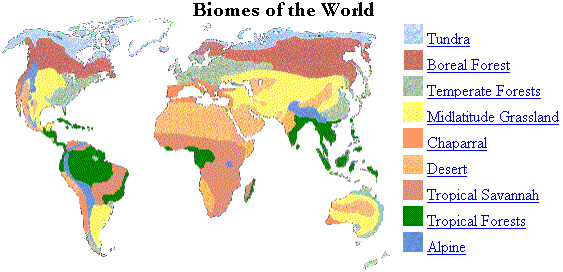
 |
|
|
TUNDRA |
|
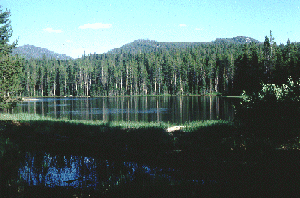 |
|
| TAIGA | |
 |
|
|
TEMPERATE FOREST |
|
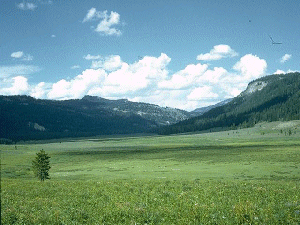 |
|
| GRASSLANDS | |
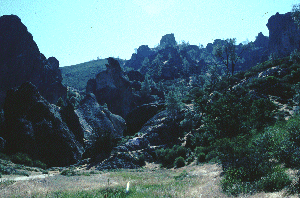 |
|
|
CHAPARRAL |
|
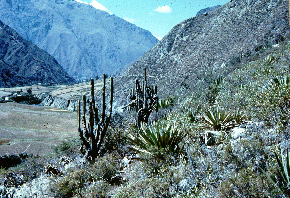 |
|
|
DESERT |
|
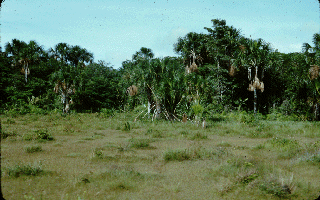 |
|
| TROPICAL SAVANNAH | |
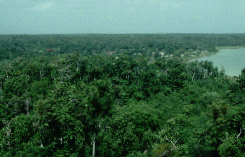 |
|
|
TROPICAL RAINFOREST Even though we've heard about it enough, here it is again. |
|
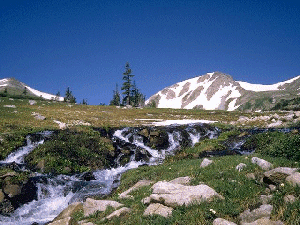 |
Basically, in the alpine, as you go up in altitude, you hit the different biomes. Tropical rain forest, deciduous forest, coniferous forest, alpine meadow, and ice and snow. |
| ALPINE | |
Water biomes are the basic things, water, fish, whales, dolphins, seaweed, yadda yadda yadda. Look it up for more info.
Whew. Quite a bit. Maybe there was something on earth afterwards. I guess we should be a little more careful with what we've got. Stop pollution, start rebuilding nature, and all that other junk those ecologists talk about. Maybe they're not just insomnia cures after all. I guess people had better wake up while they can.
Where did I get the juicy info? The book mainly, but the pics and some more info can be found at College of the Siskiyous Geography Slide Shows .